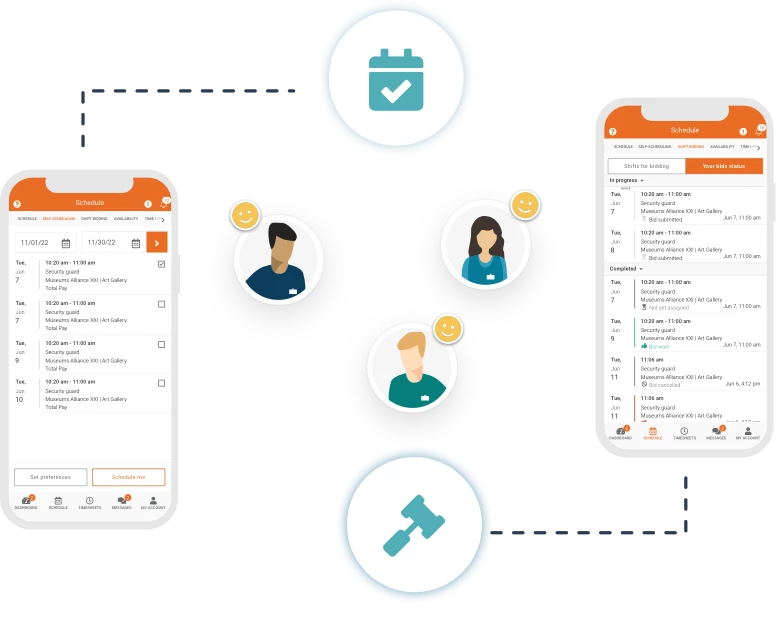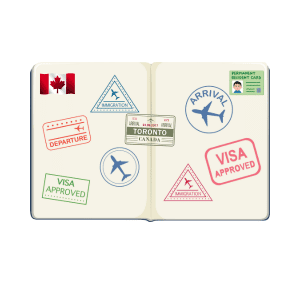Organization
“Vegas Six” (Company name confidential)
Vegas Six, one of the world’s largest providers of hotel accommodation and entertainment, boasts over six properties in Las Vegas.
Location: Las Vegas, NV
Industry: Hospitality, Events/Venues
Company size: 500-1000 employees
Challenges
Previously, Vegas Six’s banquet employees – servers, bartenders and bar apprentices – had a designated “home” work location, despite its multiple properties. If one of the properties needed staff on a given day, staff from other properties could not fill in. Instead, the union provided temporary contract employees.

With the renewal of its union contract, Vegas Six established a new class to identify employees who could work at any of the properties as needed. Two-thirds of these employees are scheduled regularly on a weekly basis, while the remaining third worked on an auxiliary basis for remaining shifts.
Regularly scheduled employees checked paper schedules posted once a week, while auxiliary staff needed to call in once a week to request shifts. Calls and voicemails from auxiliary staff could total up to 150 to 200 a day. Banquet coordinators had to attend to these calls and dedicate 20 hours a week just for scheduling-related issues.
Errors made in scheduling also affected the level of service Vegas Six provided to its customers.
The combined costs of scheduling errors and excessive time spend on creating schedules prompted the management team to seek a solution to address both of these issues.
Solution
Celayix offered employee scheduling software that checked all of their operational boxes, along with ease of use and customized features to their specific needs.
Prior to implementation, Celayix consultants proposed an online employee self-scheduling solution that would dramatically simplify weekly scheduling for banquet employees, and banquet coordinators and managers.
Celayix worked closely with Vegas Six to customize the solution, including adding a company branded home page to the online employee scheduling site.
“We have a consistent group of trained, prepared employees that are dedicated to the company, which is fantastic. They can add shifts when they want, so they’re happier, which will enhance customer service.”
Scheduling Manager
Results
Improved communication and employee satisfaction with self-scheduling
With self-scheduling, employees can pick up shifts according to their availability. These shifts are published by the banquet coordinator, who controls the types of shifts available, and who can see them. Once an employee chooses a shift date/time, they receive further details including location. This helps ensure all shifts get picked up, preventing employees from taking shifts because they want to work at a specific location.
Scheduled employees can easily pick up additional shifts, and auxiliary employees can work without having to call in to check.

Employees can easily access Celayix on their phones and can look at their schedules anytime. They also receive instant notifications of any shift changes or updates.
“Hospitality self-scheduling allows everyone to access their employee schedules over the web, where before it was a piece of paper tacked onto the wall, and they physically had to come into work and check it out,” said, the scheduling manager. “And they don’t have to call six different places and be on the phone all day.”
Overall, employees are much more satisfied with the new and easy process for shifting.
Scheduling time reduced by 20 hours a week
With self-scheduling, the time it takes for banquet coordinators to schedule is significantly reduced. Previously, it took them half their workweek, or 20 hours, to deal with scheduling-related items now. Now, they can use that time to manage other priorities. The salary being paid to banquet coordinators is now being more wisely spent as they can improve service, operations and even contribute to recruiting efforts to grow the workforce.
Improved customer service and reduced need for external contractors
By using more in-house trained employees, instead of union contractors, the organization provides a more professional, consistent experience for guests. This also saved the hotel money, as contractors are typically more expensive to schedule than their own employees.




